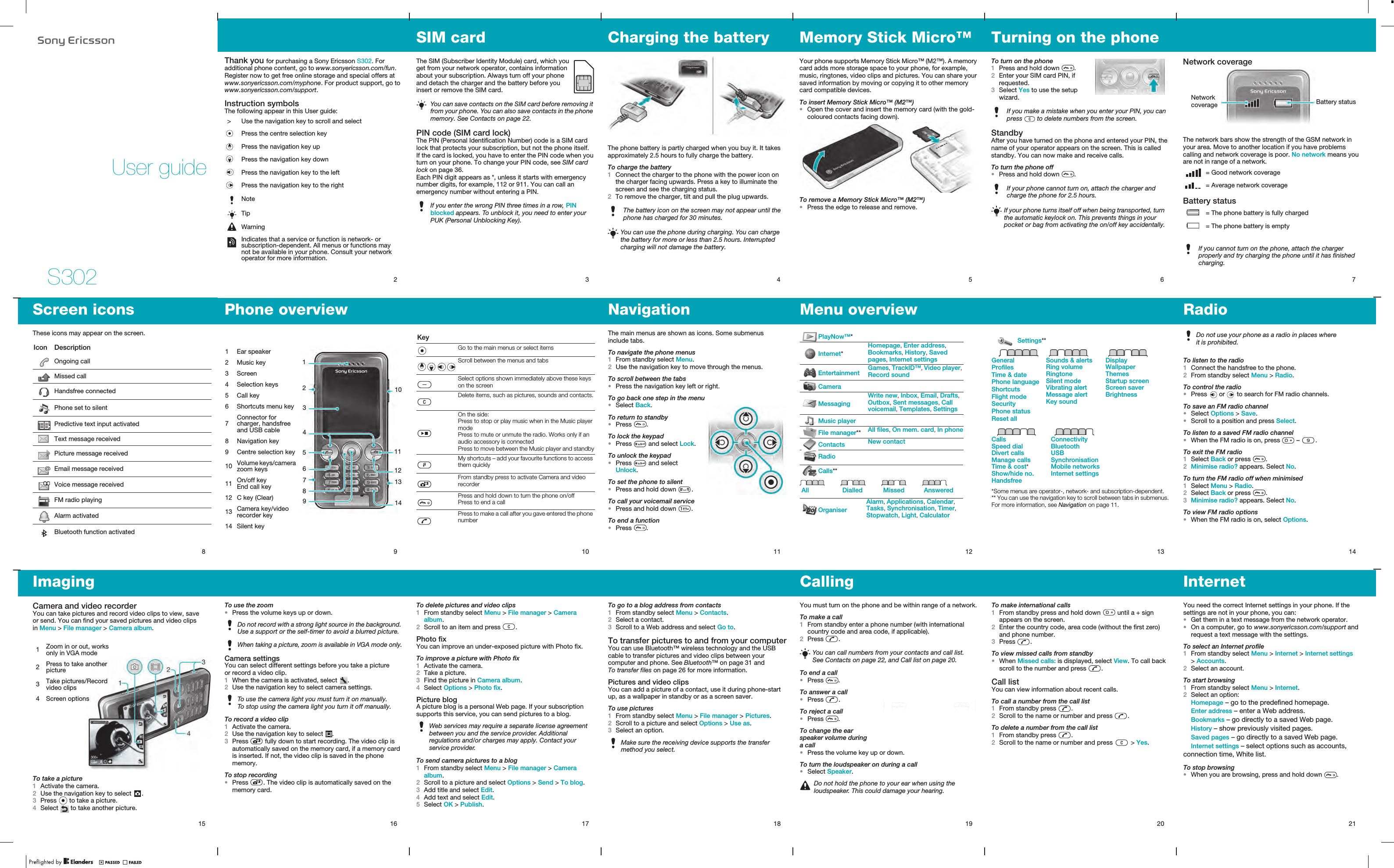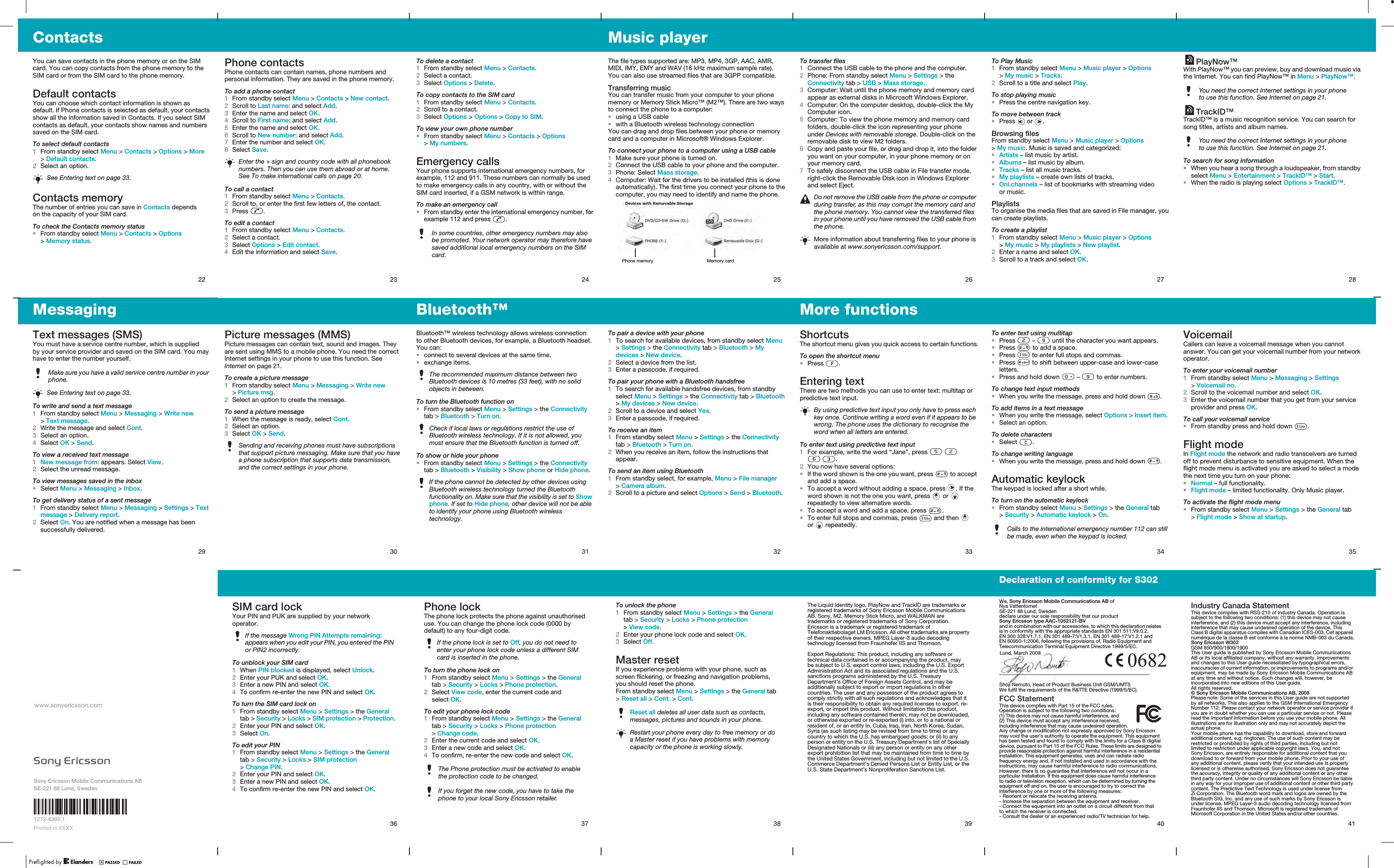Sony A1052121 GSM850/900/1800/1900/EDGE mobile phone with BT and FM Rx User Manual A7 42P indd
Sony Mobile Communications Inc GSM850/900/1800/1900/EDGE mobile phone with BT and FM Rx A7 42P indd
Sony >
Contents
- 1. 08 user manual part 1
- 2. 08 user manual part 2
- 3. 08 user guide part 1
- 4. 08 user guide part 2
08 user guide part 2

